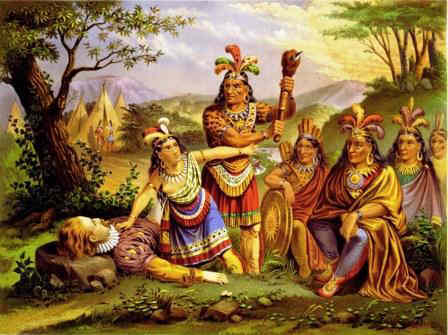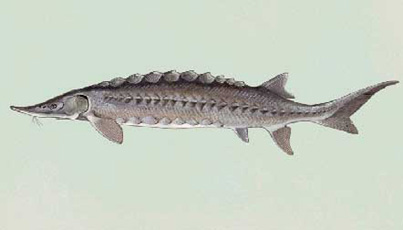some found ears of Indian corn
Previous to the interactions between the first Pilgrims and Squanto, corn was foreign to Europeans. Since their first interaction in the winter of 1620, it was common for them to include this crop in their own fields.
some found ears of Indian corn
Previous to the interactions between the first Pilgrims and Squanto, corn was foreign to Europeans. Since their first interaction in the winter of 1620, it was common for them to include this crop in their own fields.
Praying Indians
The term Praying Indians is a 17th-century term that refers to Native Americans of Quebec, Ontario, New England and New York, who converted to Christianity.
In the movie Black Robe, Laforgue set out to do exactly this.
barbarous creatures
In this case, the barbarous creatures are in reference to the Narrangansett, Wampanoag and Nashaway/Nipmuc Indian tribes.
These Indians raided the community of Lancaster, in which Rowlandson lived with her family, and made them accompany them for 11 weeks while raided other settlements. This First Remove is a description of the event.
Unfortunately, Rowlandson's 6-year-old daughter died from her wounds one week into their captivity.
Eventually, Rowlandson was ransomed for £20 by the women of Boston.
More information on the event can be found here: http://larkturnthehearts.blogspot.com/2011/04/indian-raid-in-1675-lancaster.html
Lancaster
Mary (White) Rowlandson initially moved here with her family in 1653. Here, she married Reverend Joseph Rowlandson in 1656. They had four children born between the years of 1658 and 1669.
It was also the site of their attack: see post in reference to the barbarous creatures for further information.
For further information on Mary Rowlandson's life:http://www.maryrowlandson.com/
then as many as could layd hands on him, dragged him to them, and thereon laid his head, and being ready with their clubs, to beate out his braines, Pocahontas the Kings dearest daughter, when no intreaty could prevaile, got his head in her armes, and laid her owne vpon his to saue him from death
John Smith and Pocahontas's interactions didn't exactly happen as the Disney movie had imagined it, but Pocahontas did actually save John Smith's life.
A depiction of this scene can be seen below:
 #upgEarlyAm
Source: http://www.virginia.org/virginiaindians/
#upgEarlyAm
Source: http://www.virginia.org/virginiaindians/
A good time they continued this exercise, and then cast themselues in a ring, dauncing in such severall Postures, and singing and yelling out such hellish notes and screeches; being strangely painted, every one his quiver of Arrowes, and at his backe a club; on his arme a Fox or an Otters skinne, or some such matter for his vambrace; their heads and shoulders painted red, with Oyle and Pocones mingled together, which Scarlet-like colour made an exceeding handsome shew; his Bow in his hand, and the skinne of a Bird with her wings abroad dryed, tyed on his head, a peece of copper, a white shell, a long feather, with a small rattle growing at the tayles of their snaks tyed to it, or some such like toy.
I feel that this description really helps to paint a picture of the Powhatan tribe and their traditions.
Native Americans of the time typically dressed in such fashion - utilizing war paint, furs from local animals, etc.
 Source:http://kmamericanlit.blogspot.com/2012/01/blog-post.html
[http://www.indians.org/articles/native-american-clothing.html] #upgEarlyAm
Source:http://kmamericanlit.blogspot.com/2012/01/blog-post.html
[http://www.indians.org/articles/native-american-clothing.html] #upgEarlyAm
Sturgeon
Sturgeon are bottom-feeding fish that have no scales and long bodies that can reach lengths of 12 feet.
During the time that this was written, Sturgeon were still a plentiful fish in the Americas. Due to overfishing, constricted migrating routes and environmental hazards, this is no longer the case.
However, in the Jamestown settlement, colonists reported that Sturgeon were plentiful in the James River from May to October.
 Source: https://cites.org/eng/gallery/species/fish/atlantic_sturgeon.html
[http://historicjamestowne.org/selected-artifacts/sturgeon-2/] #upgEarlyAm
Source: https://cites.org/eng/gallery/species/fish/atlantic_sturgeon.html
[http://historicjamestowne.org/selected-artifacts/sturgeon-2/] #upgEarlyAm
furres
Furres is the early version of the word "furs." The fur trade was a crucial part of the early Americas. The fur trade was especially popular within New France, but it was also important in the English settlements, as well. Fur could often act as currency in this time because of its value.
 Source: Library and Archives Canada - originally from: Cartouche from William Faden, "A map of the Inhabited Part of Canada from the French Surveys; with the Frontiers of New York and New England", 1777
[http://www.pcmaf.org/wordpress/about/local-information/fur-trade/] #upgEarlyAm
Source: Library and Archives Canada - originally from: Cartouche from William Faden, "A map of the Inhabited Part of Canada from the French Surveys; with the Frontiers of New York and New England", 1777
[http://www.pcmaf.org/wordpress/about/local-information/fur-trade/] #upgEarlyAm